With this map it can be seen that Schofield Barricks Reservation training extended nearly
from shore to shore. It did extend from mountain to mountain.

Schofield Barracks, began as a simple cavalry camp on the Leilehua plain in 1909. The purpose of the base
was to defend Pearl Harbor from an overland attack from the North Shore.
Between 1908 and 1911, coastal defense guns were placed along the southern coast
at Forts Ruger, DeRussy, Armstrong, Kamehameha, and Weaver....
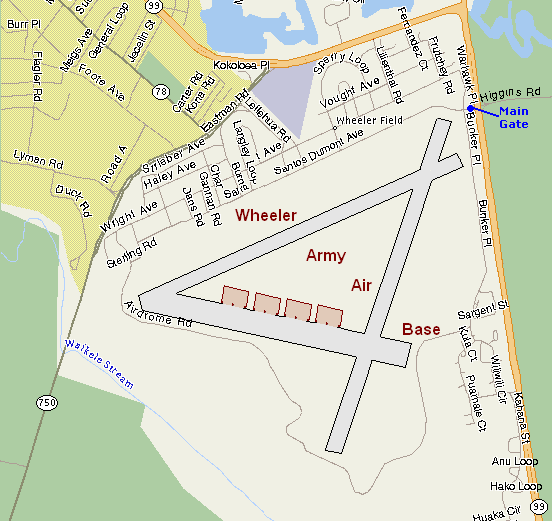 |
In March of 1942, all the military
dependents on the islands were evacuated to the mainland. The pilots of
the 45th FS helped clean up Wheeler Field, dispersed planes into
revetments, etc. They then moved to an airstrip near Kaena Point, at
first flying constant daytime patrols, which quickly wore out both men
and machines. They received new planes, P-40E's and Bell P-39
Airacobra, both of which had their drawbacks. The Model E Warhawk was
even heavier and more sluggish than its pre- decessors, and the
Airacobras had an unfortunate tendency to tumble. Throughout the summer
of 1942, the 45th FS pilots led a fairly dull life: gunnery practice
and flying patrols. This
is where Merril Sheckler maintained planes from
1942 thru 1945. His nephew LaVerne made a paper model of the P40E while he lived at Merril's parents. 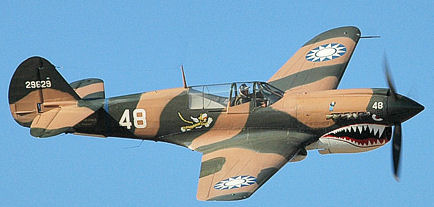 |
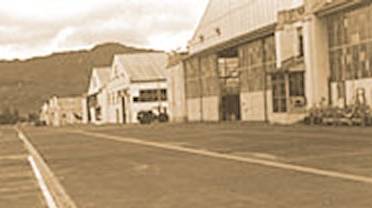 |
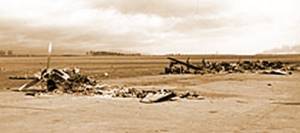 During the first
wave of the Japanese attack on Pearl Harbor on December 7, 1941, 25
dive-bombers dropped approximately 35 bombs on the hangars at Wheeler
Field.
|
| The Japanese airplanes returned to strafe the fight line, turning it into a river of fire. Four fighters from the 46th Pursuit Squadron were able to take to the air and attack the Japanese over southeastern Oahu. The second Japanese wave arrived and strafed the field, but caused little more damage before the attack ended at 9:45am. Eighty-three aircraft had been destroyed, 38 enlisted men were killed and 59 men were wounded. Wheeler Field quickly recovered and played an important role in World War II. The Seventh Air Service Command was established at Wheeler in 1944 to provide service and support for the B-29 bombers in the Marianas which began massive raids against Japan that fall. Placed in care-taking status in 1949, Wheeler Field was reactivated during the Korean War and houses Army helicopters today., http://www.cr.nps.gov/nr/travel/aviation/whe.htm | |
A view of the modern Main Gate 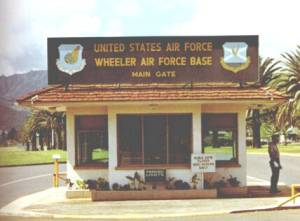 |
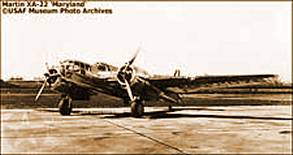 v BELOW v CENTRAL PACIFIC THEATER OF OPERATIONS (Seventh Air Force) The 371st Bombardment Squadron , 307th Bombardment Group with B-24s and based at Wheeler Field, Territory of Hawaii "Look more like Martin A30 Baltimores to me". See Above |
 |
|
| Standing
before a Curtiss P-36 fighter, one of the few that survived, five USAAF
pilots who shot down one or more enemy aircraft pose for a photograph.
From left to right: 1st Lt. Lewis M. Sanders (1 victory), 2nd Lt.
Phillip M. Rasmussen (1 victory), 2nd Lt. Kenneth M. Taylor (2
victories), 2nd Lt. George S. Welch (4 victories) and 2nd Lt. Harry W.
Brown (1 victory). Together, these 5 pilots shot down nine Japanese
aircraft confirmed, with 4 probables and two damaged. This amounts to
nearly 1/3 of all Japanese aircraft lost during the Pearl Harbor
attack. Three of the men are wearing sidearms, indicating that they
were probably on duty when this photo was taken. From: Curtiss P40 Warhawk |
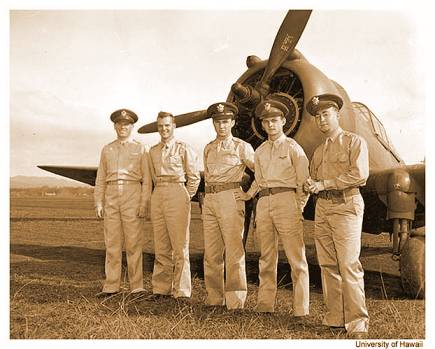 |